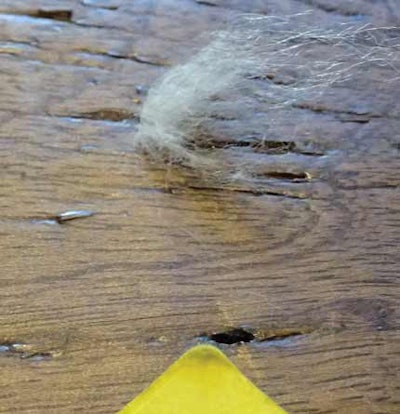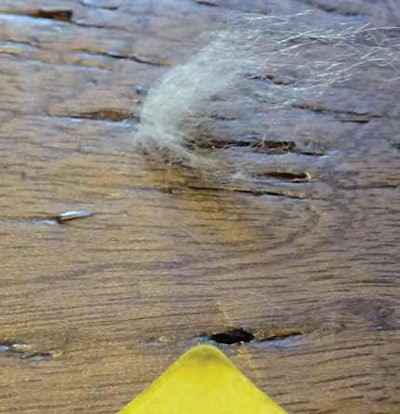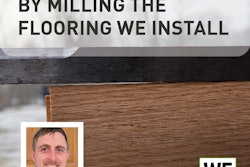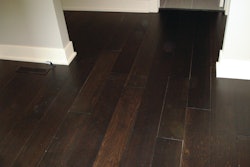
 The “rustic” wood floor created splinters easily, whether in a cloth or in the customers’ feet.
The “rustic” wood floor created splinters easily, whether in a cloth or in the customers’ feet.
The Homeowners’ Issue
The homeowners purchased a hand-scraped rustic wood floor with an old-world look and a urethane finish. After the floor was installed, the homeowners used the recommended cleaner and microfiber mop. The homeowners noticed splinters stuck in the microfiber cloth mop. Then their young grandson came over and got slivers in the top of his foot and toes after crawling on the floor. The homeowners called the retailer, the retailer called the flooring manufacturer, and the manufacturer scheduled an inspection from a certified inspector.
Roy: The Inspector’s Observations
The owner provided the microfiber cloth mop head cover to me, and there were trapped wood fibers in the cloth even after laundering. During my inspection, I used my own cloth in several locations, and it was easy to trap slivers and wood fibers in the cloth. My conclusion is the wood floor provides a safety concern when walking on the floor or when wiping up the floor by hand and is a manufacturer defect.
Blake: The Attorney’s Analysis
I would first want to know whether these customers received a bad batch of flooring—in other words, do only the boards these customers received splinter, or is this just how the product is designed?
If this customer was unlucky and received a bad batch, then the solution should be simple: demand replacement product. The manufacturer’s warranty probably excludes covering labor to pull out and reinstall the floor (I have covered that game of musical chairs in prior columns). If this was just a bad lot, the manufacturer should provide new boards, and the parties will need to agree on who will pay for the labor.
If, instead, all boards in this product line splinter and create a possibly harmful condition, then the question is whether the product is defective and is not fit for its intended purpose. Is it reasonable to expect wood to not have splinters? Are they simply an inherent part of the material? If a person alleged the product is defective, they might need to overcome the manufacturer’s defense that it simply acts like wood.
However, I believe that if this flooring causes slivers on a regular basis, then there is a strong argument that its design is flawed, the product is dangerous, and it is not suitable for installation in a home. However, someone would need to assert those claims against the manufacturer, and it is unlikely the parties in our example would want to incur the time or expense to take on a manufacturer in a product defect suit.
The best solution is likely to inform the manufacturer of the issues and see how the company responds. If it says splinters do not usually happen, then the customer should obtain replacement product. If the manufacturer indicates that all the boards in this product line are this way, then the customers should ask for a refund and hope the manufacturer cooperates. The customer could then install a different floor, and the parties would need to agree on who will pay for the additional labor costs.
See more from Reichow and Nelson here:
Who Will Pay for This Bizarre Wood Flooring Problem?
Wood Flooring Shear or Delamination? And Who's at Fault?

































